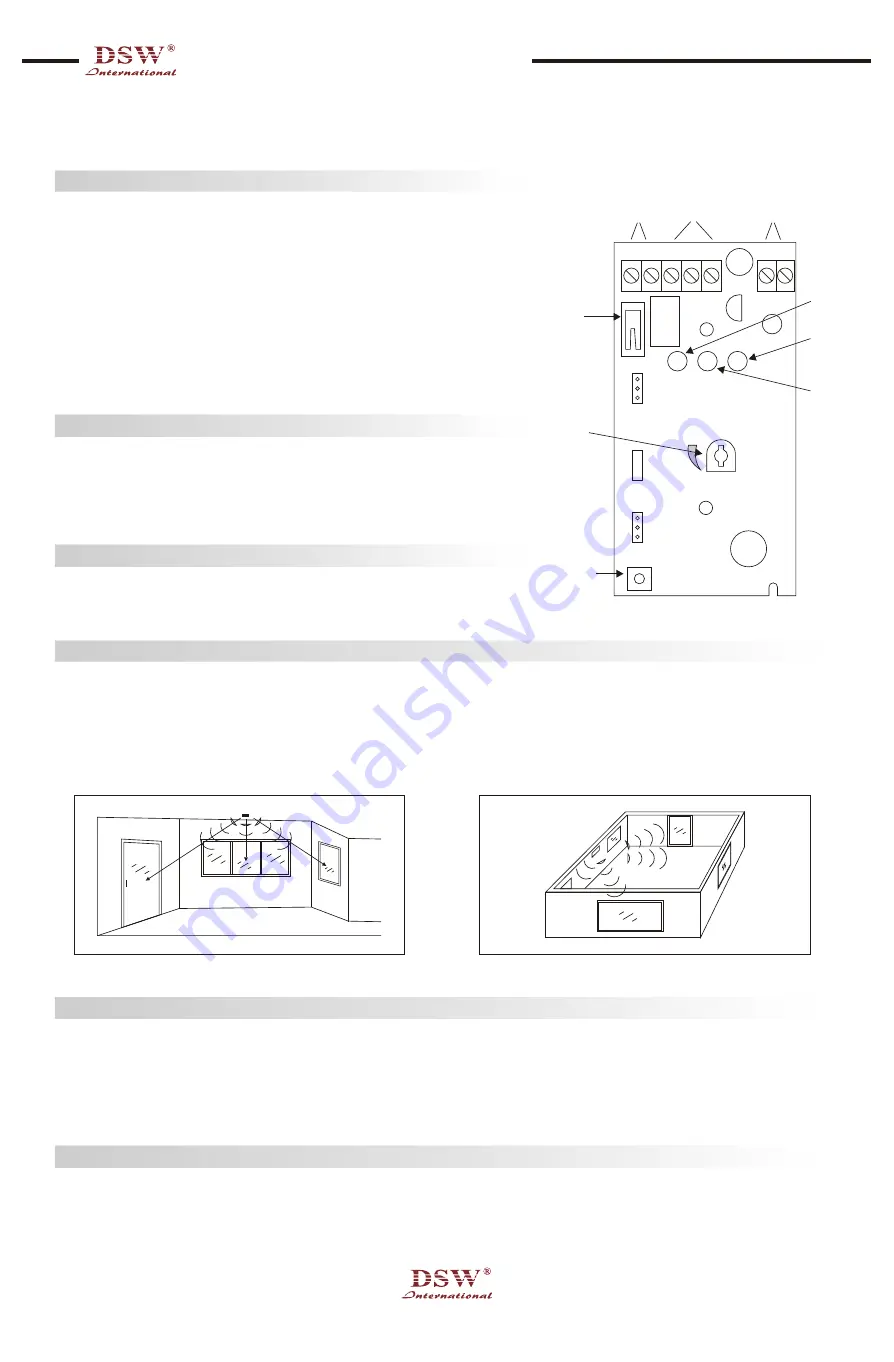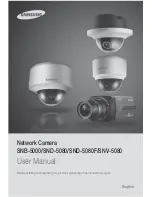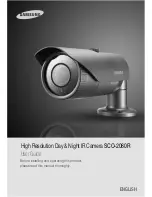
Address: Room1121 Linqiao Piazza, Ningbo City,315010, China Tel:+86(574) 27861829 27861849 Fax:+86(574)87264906
E-mail: [email protected]
Http://www.
brand.COM
DSW
Ningbo DSW International Co.,Ltd.
O
F
F
O
N
M
E
M
O
R
Y
O
F
F
O
N
S
T
A
T
U
S
L
E
D
Test
LED
Alarm
LED
Status
LED
TEST STATUS ALARM
TAMP C NC NO
+ -
Tamper
Output
Relay Output
Power
S
E
N
S
IT
IV
IT
Y
P
O
S
O
N
IC
P
S
-3
7
2
TEST
Test
Mode
SW
Sensitivity
VR
Tamper
SW
MIC
Figure 1
PS-372 Digital Glass Break Detector
Installation Manual
Thank you for selecting the PS-372 glass break detector, which is designed for
professional .security applications, with advanced techniques. Please follow the
instructions m this manual carefully to optimize use of your detector, which has
been 100% quality control tested to ensure proper operation and unit durability.
The PS-372 is a microprocessor-based glass break detector utilizing dual fi-
equency analysis to detect the common sounds of shattering glass and acoustical
shock.when a window is broken. It can analyze the frequency and wave shape of
the sound received by a condenser microphone and compare with the real glass
break data inside .its database and determine whether it is an alarm .signal. The
detector's sensitivity can be set manually so that a good balance point is reached
according to the environment condition. "The alarm LED indicating lamp on the
detector may be programmed for memory or auto reset with a configuration
jumper inside the detector.(See Fig.1). You have got PS-372, the most advanced
glass break detector available on to-day's security market.
The PS-372 will protect 3- 6mm plate glass and 6mm tempered and laminated
glass at a range of up to 8m. In order to achieve the best result, the detector
should be firmly fixed on a surface. Room acoustics will also affect the range of a
glass break detector, It is better that the acoustic environment, such as furniture
layout, during testing is same as the normal situation. It is very important that the
detection range is verified using the PS-373 tester.
1. Driven by software, 8/12 bits microprocessor, controlled DSP(8MHz)
2. High fi'equency and sound pressure detection
3. Digital RF1/EMI filtering, extremely high immunity.
4. Manual sensitivity settings to avoid false alarm.
Mount the PS-372 on the ceiling or wall with the most open and direct acoustic path to the protected glass. (See Fig 2 &3). Keep an
open field between the glass break detector and points of entry (no partitions, walls, etc. between the detector and the protected glass.)
While the PS-372 may be mounted on any wall or ceiling, a 40% reduction in range is expected when mounting on the same wall as the
glass. Drapes and window coverings will affect the detection range. USe the PS-373 Glassbreak Simulator behind window coverings to
test properly. Do not mount the detector closer than 1.2m to door bells, air conditioners, air compressors, large fans, steam or air vents,
or any other sources that tend to generate noise interference. If, for any reason, the unit does not enter the Normal mode of operation
immediately following its power up sequence (see STATUS INDICATORS), verify that the TestMode Jumper/Switch is in the OFF
position and reset the device by de-powenng and reapplying power.
1. Remove the cover by pressing the opening pin(l) on the side of the detector.
2. Run the wire through one of the holes at the back or side openings of the case.
3. Connect the terminals.
4. Mount the detector in its location with a screw inserted into screw holes (2) and (3).
5. Setting of sensitivity
6. Replace the cover.
7. Test the detector.
MOUNTING LOCATION
Figure 3 (mounted on wall)
Figure 2 (mounted on ceiling)
FEATURES
INTRODUCTION
INSTALLATION
APPLICATIONS
WIRING TERMINATION
-Wiring connection of the terminals is as follows:
TAMP: Connect to 24 hour zone or tamper zone of alarm control panel.
RELAY OUTPUT: NC,C is normal closed output, NO,C is nom3al opened output.
POWER SUPPLY: Connect to DC12V auxiliary output of alarm control panel.




















